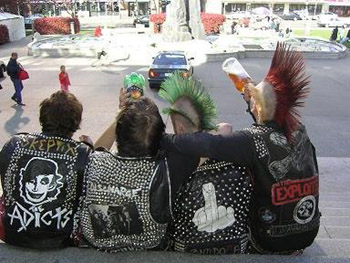
Ive been having an interesting experience writing up the results of a PAR study this week, particularly in regard to issues of confidentiality.
Participatory action research prides itself on dealing with issues of power is research, positioning the partners as equals to the researcher who together co-construct meaning and develop something that can lead to valuable local change.
The possible dilemmas that can arise, however, can mediate against this effort...in my own case, for example, the participants became concerned about identifying as authors on the paper as it would mean people might guess who they were...some wanted authorship and others voted no, leaving us in a quandry..should we change the results so they are less revealing so authorship is possible? should we say no authorship but then they miss out? Its not as void of power as we might think..
Also what to do if the participants are concerned about some of their direct quotes in retrospect...there perspective on the issues may have changed since the research was conducted...should the paper be changed? Is the paper editing meeting another 'interview' ? Should it be coded and integrated into the results?



